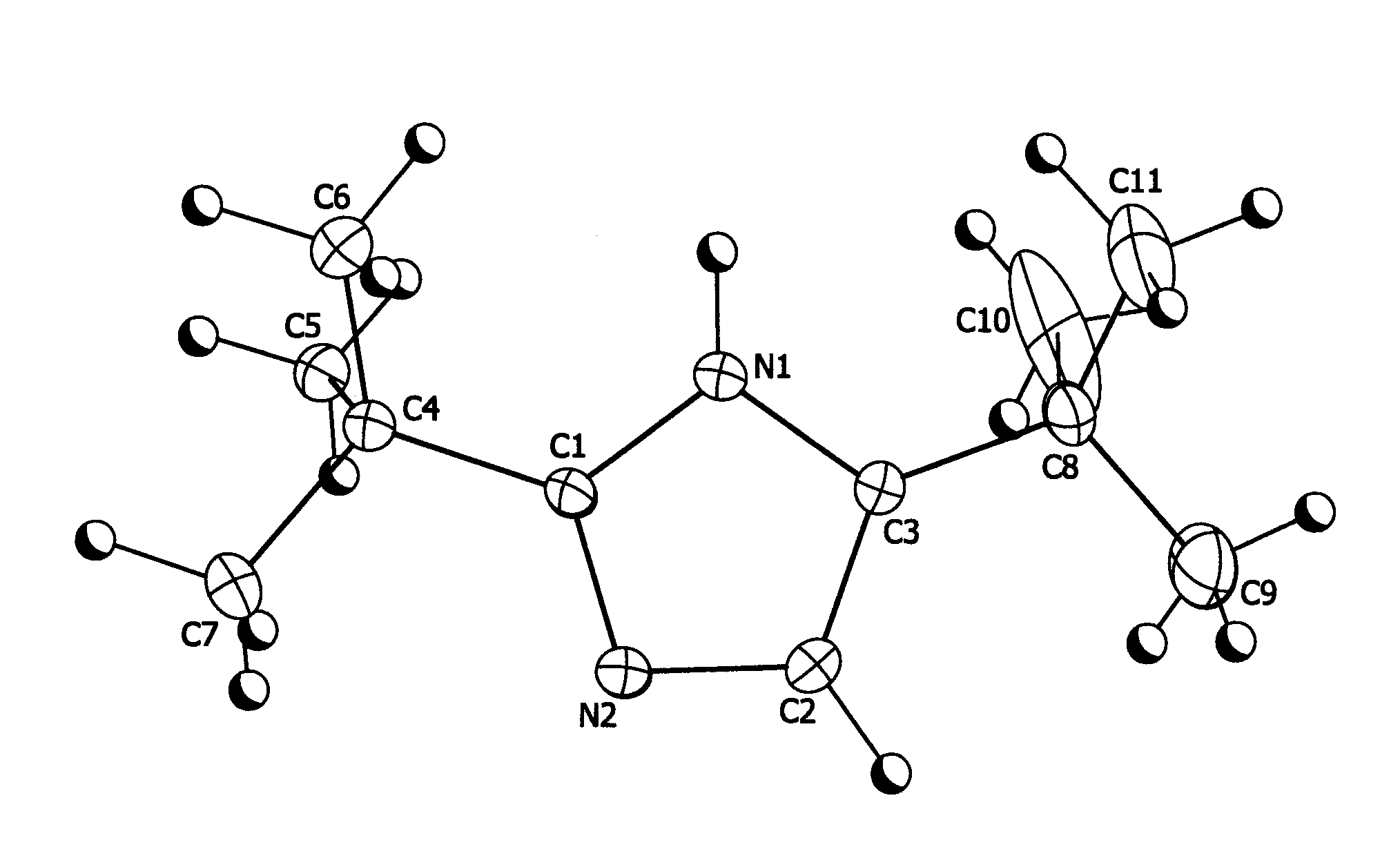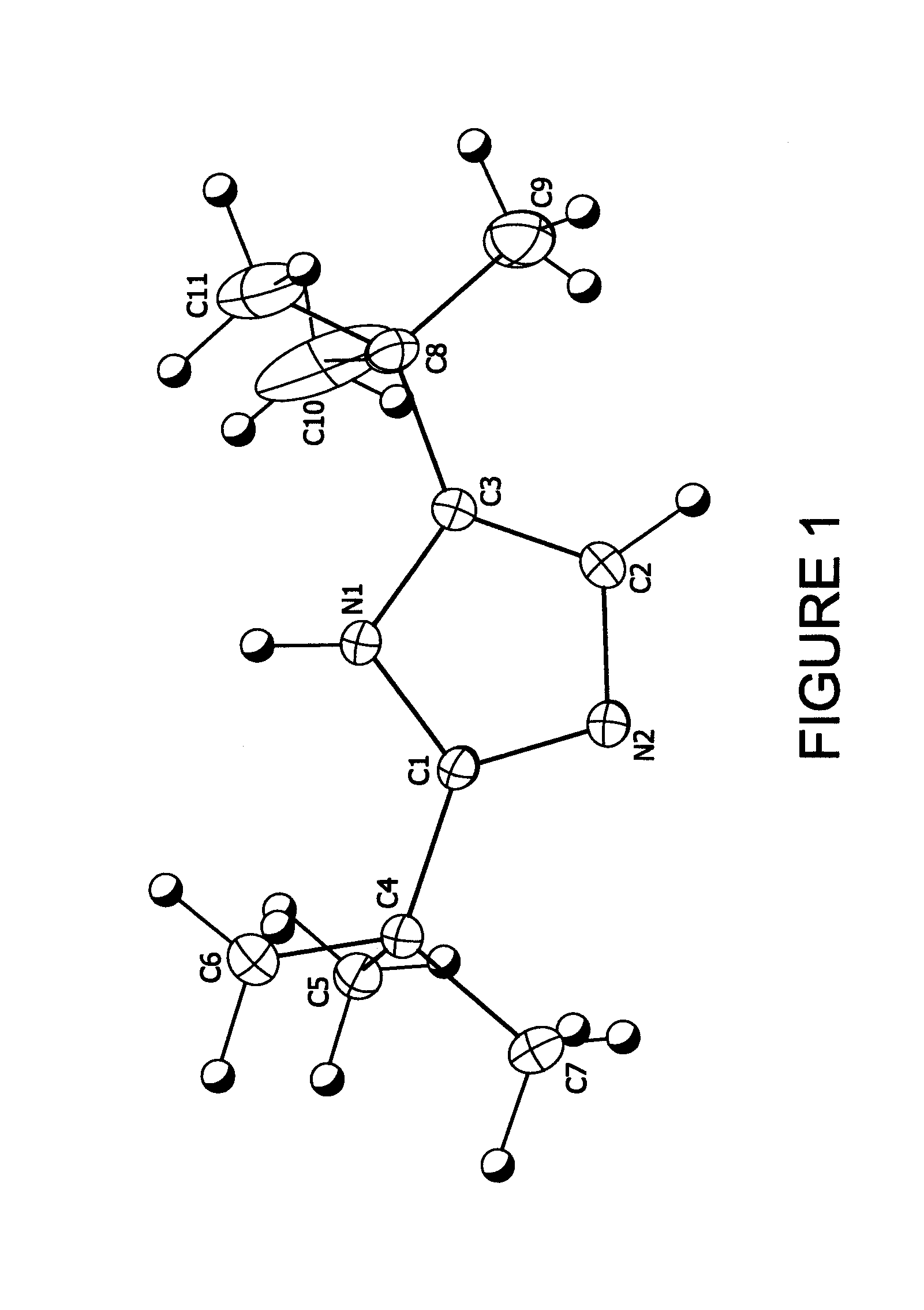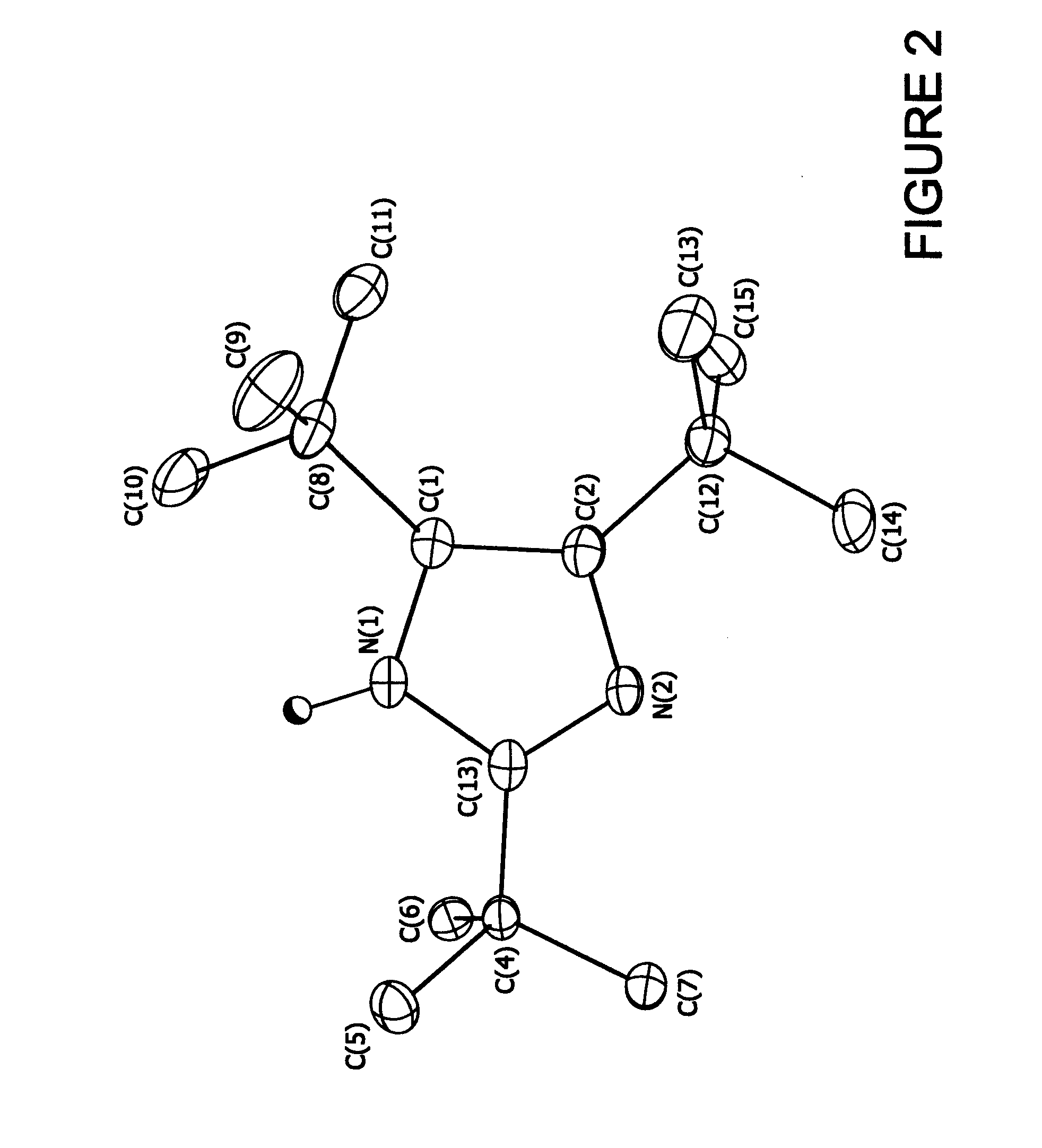Volatile Imidazoles and Group 2 Imidazole Based Metal Precursors
a metal precursor and imidazole technology, applied in the direction of group 2/12 element organic compounds, chemically reactive gases, crystal growth process, etc., can solve the problems of low ald performance of precursors, low yield, and low dielectric constant of oxide films
- Summary
- Abstract
- Description
- Claims
- Application Information
AI Technical Summary
Benefits of technology
Problems solved by technology
Method used
Image
Examples
example 1
Synthesis of 2,5-di-tertbutylimidazole
[1148]5.44 g (0.04 moles) of 2,2-dimethylpropanimideamide hydrochloride were mixed with 7.2 g (0.04 moles) of 1-bromopinacolone and 11.2 g of triethylamine in 16.0 g of diethylformamide (DEF) and stirred at room temperature for 7 days. The reaction mixture was then poured into water and extracted three times with 50 ml units of hexane. The hexane fractions were combined and washed three times with 50 ml aliquots of water. The hexane layer was then stirred with 5 g of anhydrous magnesium sulfate over night. The hexane was then removed by vacuum down to a volume of 5 ml to yield a fine suspension. This was filtered and the resulting solid washed with fresh hexane to yield 4.22 g (59% theoretical) of colorless fine crystalline product, 99% pure by Gas Chromatography Mass Spectrometry gave a parent ion at 180 amu. Structure confirmed by X-ray crystallography (see FIG. 1)
GCMS.
[1149]1H NMR: (500 MHz, D8THF): δ=1.23 (s, 9H), δ=1.3 (s, 9H), β=6.48 (s, 1...
example 2
Synthesis of 2,2,5,5-Tetramethyl-3-hexanone
[1151]2-chloro-2-methylpropane (75 g, 0.8 mol) was slowly added to magnesium pellets (19.5 g, 0.8 mol) in 800 mL of THF to make the Grignard reagent, tBuMgCl. This was added slowly to a mixture of cuprous chloride (49.5 g, 0.50 mol) and tertbutylacetylchloride (67.25 g, 0.50 mol), cooled to −50° C. in dry ice. After addition, the mixture was allowed to warm up to room temperature overnight. Most of the THF was removed by decreased pressure, followed by the addition of 500 mL of hexanes and 200 mL of 2M HCl. This mixture was filtered to remove the solid byproducts. The aqueous layer was washed 3× with 100 mL of hexanes, the hexanes layer washed 3× with 200 mL of 2M HCl, 2× with 200 mL of NaHCO3 / water, 1× with 200 mL of water, and finally 1× with 200 mL of NaCl / water. The product mixture was then dried for an hour in MgSO4, which was subsequently removed by filtration. The hexane was then removed by atmospheric distillation.
[1152]Yield=61 g (...
example 3
Synthesis of 4-Bromo-2,2,5,5-tetramethyl-3-hexanone
[1153]24 g of N-bromosuccinimide (0.1344 mol) was added to 10 g of 2,2,5,5-Tetramethyl-3-hexanone (0.064 mol) in 50 mL of trimethylacetonitrile. To this mixture, 10 g of ammonium acetate (0.1344 mol) was added within 5 minutes. This mixture was refluxed overnight then filtered. To the filtrate, 24 g of N-bromosuccinimide (0.1344 mol) and 10 g of ammonium acetate (0.1344 mol) was added, then refluxed for 5 hours. The reaction mixture was then cooled, 600 mL of water added, and the resulting mixture then filtered. The aqueous layer was washed three times with 50 ml of hexanes. The hexane fractions were then combined, washed three times with 50 ml of with water, then dried with anhydrous magnesium sulfate. Product was collected by distilling off the hexane at atmospheric pressure.
[1154]Yield 11.6 g, (77% of theoretical)
Product identified by Mass Spectrum parent ion of 236 mu, NMR consistent with literature: D. P Bauer, J. Org. Chem., V...
PUM
| Property | Measurement | Unit |
|---|---|---|
| temperature | aaaaa | aaaaa |
| atmospheric pressure | aaaaa | aaaaa |
| temperature | aaaaa | aaaaa |
Abstract
Description
Claims
Application Information
 Login to View More
Login to View More - R&D
- Intellectual Property
- Life Sciences
- Materials
- Tech Scout
- Unparalleled Data Quality
- Higher Quality Content
- 60% Fewer Hallucinations
Browse by: Latest US Patents, China's latest patents, Technical Efficacy Thesaurus, Application Domain, Technology Topic, Popular Technical Reports.
© 2025 PatSnap. All rights reserved.Legal|Privacy policy|Modern Slavery Act Transparency Statement|Sitemap|About US| Contact US: help@patsnap.com



